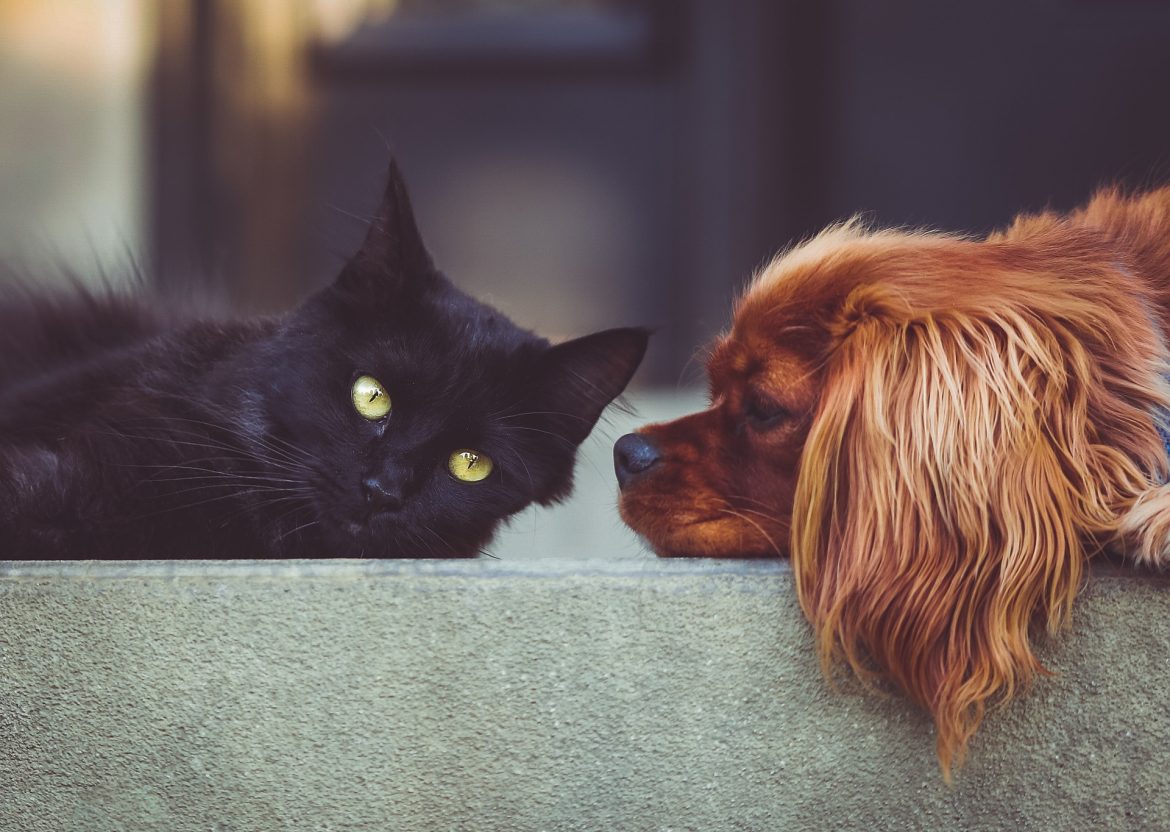Even the most social of cats don’t feel the urge to form a group. While they might befriend cats, humans, and even dogs, they will always do so as individuals, not pack creatures. If you have a cat and you want to expand your pet family, you’ll need to do it on your kitty’s terms. We’ve talked about convincing your cat to love you, but loving a second pet is a different can of Whiskas. By applying these tips, your fluffy friend will open their hearts to a second pet before you know it!

Dog: “Can we be friends?” Cat: “Read my manual, then we’ll talk.”
Cat Meets Cat
Let’s begin by introducing your current cat to a second pet feline. On one hand, this will be a simple process, because they’re both cats. On the other hand, it will be a challenge – because they’re both cats. Kitties can be averse to change, so you cat may gawk when a new fluffball arrives on their turf. The new cat, for their part, may feel daunted by entering the domain of a new feline.
To best overcome these hurdles, make process and protocol your friends.
Introduce them in stages
If you move your two cats into the one room and expect them to be friends within the day, you may be disappointed. Instead, let them first grow accustomed to the sounds and smells of their new roommate. For the first week, keep your second pet in a separate room to your current cat. This will allow your new feline to settle in, while letting your resident cat come to recognise the new scent.
During this time, give each cat their own litter tray, and make sure you feed them separately.
Show love for your second pet…but even more love for your first
During the first few weeks, give your current cat lots of love and attention. This will prove to them that this newly arrived kitty hasn’t stolen their human.
Hasten slowly
Towards the end of the first week, you can begin to let your two cats mingle for stretches of 10 – 15 minutes. At first they might arch their backs and hiss, but don’t worry: this is part of the process. Once they both seem confident, you can give both of them free reign of your home. Some might warm to each other straight away, and other might treat each other like disdained cousins. In either case, trust that they will make progress – even if it doesn’t make sense to our human eyes.
Cat Meets Dog
Ah, the old “Cat vs Dog” conundrum. If you listen to pop culture, you’d believe theirs was a rivalry that predated the wheel. Indeed, in many ways, they’re the classic Odd Couple. One is a pack animal, while the other is happy to keep their own company. One swishes their tail when they’re happy, the other when they’re upset. However, despite these differences, dogs and cats can still be the best of friends.

“We’ve got nothing on dogs and cats.” -The Odd Couple
Choose the right dog
In many ways, older dogs can make for easier pets than puppies. However, if you’re looking to mix cats with dogs, you may have more luck with a puppy. If a puppy grows in the presence of a cat, they’ll view the cat as a member of their pack. This means they’ll be much more likely to follow the kitty’s lead.
If you do bring home an older dog, ensure they’re trained to follow your commands. That way, you’ll be able to control them if they attempt to lash out at your cat. Don’t feel discouraged if the older pooch still needs some training. It’s never too late to teach an old dog new tricks – and some even respond better to training when they’re older.
Control every aspect of their first meetings
Before your cat and your second pet meet for the first time, take the pooch for a long walk and give them plenty of food. This will put them in a buoyant mood for their first meeting with your kitty. If your cat can be skittish, keep them in a carrier for this first meeting. If they’re more assertive, let them wander around at their own pace. In either case, keep the dog on a leash at all times.
For this first meeting, let them acquaint themselves with each other from a distance. If the dog tries to make a run for it, use the leash to keep them in place. If they both remain in the same space, reward them with treats. This will send a clear message to both your first and second pet: “new creature=happiness!”
Repeat this process for several days in a row, and restart the clock if you have an incident.
Supervise every aspect of their next meetings
Once you’ve successfully completed the above step, you can progress to Phase Two: Leashless Boogaloo. Let your cat and your dog spend several untethered visits with each other under your supervision. If the dog becomes too excitable or aggressive, and doesn’t respond to your commands, be ready to reattach the leash.
Once they feel relaxed around each other, you can try leaving them on their own. Just ensure your cat has a ledge, shelf, or safe space to which they can flee. It will also help if you keep your cat’s food bowl and litter in a place your dog can’t reach. Nothing tells a cat “I am incompatible as your roommate” more than a messy litter box.
Need someone to help you settle a second pet into your cat-loving household? Reach out to a Mad Paws Pet Sitter today!

